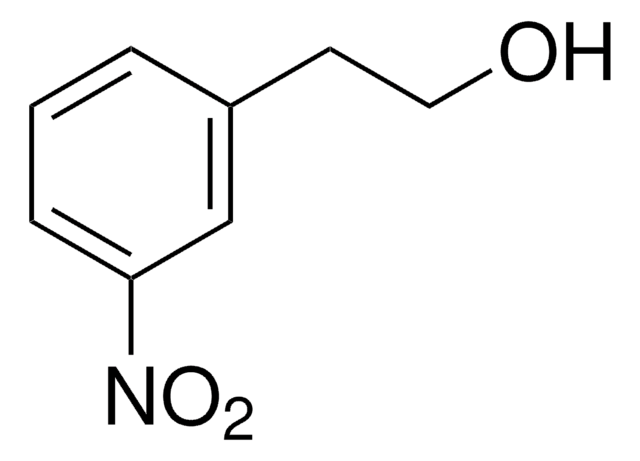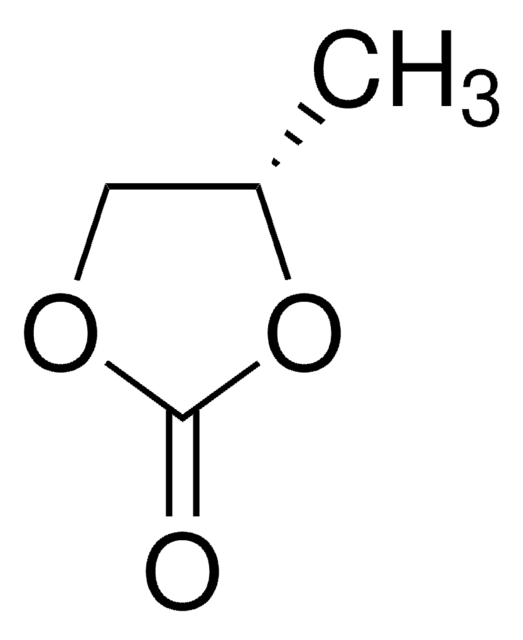310328
Propylene carbonate
anhydrous, 99.7%
Synonym(s):
1,2-Propanediol cyclic carbonate, 4-Methyl-1,3-dioxolan-2-one
About This Item
Recommended Products
grade
anhydrous
Quality Level
vapor pressure
0.13 mmHg ( 20 °C)
0.98 mmHg ( 50 °C)
Assay
99.7%
form
liquid
autoignition temp.
851 °F
expl. lim.
14.3 %
impurities
<0.002% water
<0.005% water (100 mL pkg)
refractive index
n20/D 1.421 (lit.)
pH
7 (20 °C, 200 g/L)
bp
240 °C (lit.)
mp
−55 °C (lit.)
density
1.204 g/mL at 25 °C (lit.)
SMILES string
CC1COC(=O)O1
InChI
1S/C4H6O3/c1-3-2-6-4(5)7-3/h3H,2H2,1H3
InChI key
RUOJZAUFBMNUDX-UHFFFAOYSA-N
Looking for similar products? Visit Product Comparison Guide
Related Categories
General description
Application
Signal Word
Warning
Hazard Statements
Precautionary Statements
Hazard Classifications
Eye Irrit. 2
Storage Class Code
10 - Combustible liquids
WGK
WGK 1
Flash Point(F)
269.6 °F - closed cup
Flash Point(C)
132 °C - closed cup
Personal Protective Equipment
Choose from one of the most recent versions:
Already Own This Product?
Find documentation for the products that you have recently purchased in the Document Library.
Customers Also Viewed
Articles
Solid-state lithium fast-ion conductors are crucial for safer, high-energy-density all-solid-state batteries, addressing conventional battery limitations.
Solid-state lithium fast-ion conductors are crucial for safer, high-energy-density all-solid-state batteries, addressing conventional battery limitations.
Solid-state lithium fast-ion conductors are crucial for safer, high-energy-density all-solid-state batteries, addressing conventional battery limitations.
Solid-state lithium fast-ion conductors are crucial for safer, high-energy-density all-solid-state batteries, addressing conventional battery limitations.
Our team of scientists has experience in all areas of research including Life Science, Material Science, Chemical Synthesis, Chromatography, Analytical and many others.
Contact Technical Service












